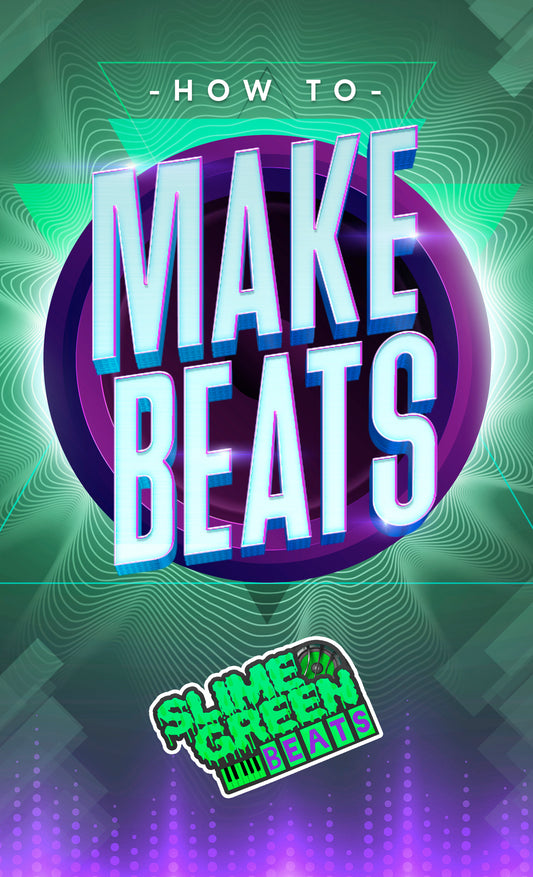Ever dreamt of having your own recording studio but worried about the cost? Well, you're in luck. Setting up a home studio on a budget is totally doable. You don't need to break the bank to get professional-sounding results. With some smart choices and a bit of creativity, you can create a space that works for you. From picking the right room to choosing gear that gives you the most bang for your buck, this guide will walk you through the essentials without emptying your wallet.
Key Takeaways
- Pick a medium-sized room to avoid echo and cramped sound.
- DIY acoustic treatment can save money and improve sound quality.
- Focus on essential gear first: a good microphone and audio interface.
- Use free or budget software to start, then upgrade as needed.
- Learn from free online resources and practice to improve your skills.
Finding the Perfect Space: Where to Set Up Your Studio

Avoiding the Echo Chamber: Room Selection Tips
Alright, let's talk about the room. Picking the right space for your home studio is like choosing the perfect avocado—tricky, but oh so satisfying when you get it right. Avoid rooms with low ceilings and square shapes. Why? Because sound waves love to bounce around in those spaces, creating a mess of echoes and reflections. If you're stuck with a low ceiling, consider some acoustic treatment to tame the beast.
Here's a quick checklist for your room hunt:
- Medium-sized room: Not too big to cause echoes, not too small to feel cramped.
- Quiet location: Away from street noise and household traffic.
- Avoid square rooms: They can create sound dead zones due to parallel walls.
DIY Acoustic Treatment: Making Your Room Sound Less Like a Bathroom
Now, onto making your room sound like a studio and not a shower stall. You don't need to break the bank to get decent acoustics. A few household items can work wonders:
- Thick curtains: Hang them up to absorb sound.
- Rugs: Lay them down to reduce echo.
- Bookshelves: Fill them with books to diffuse sound waves.
Remember, it's not about making your room silent; it's about controlling how sound behaves within it.
Sketching Your Studio: Planning the Layout Without a Degree in Architecture
Time to channel your inner architect. Sketching out your studio layout helps you make the most of your space without needing a fancy degree. Consider these points:
- Equipment placement: Keep it ergonomic. You want to reach everything without turning into a contortionist.
- Workflow: Arrange your gear to promote a natural flow of creativity.
- Lighting: Good lighting keeps the vibe positive and reduces eye strain.
With these tips, you’re on your way to creating a home studio that’s both functional and fabulous. And hey, if Harry Potter can live under the stairs, surely you can make a spare room sound like a million bucks!
Essential Gear: What You Really Need (and What You Don't)
Microphones: Why You Don't Need a Gold-Plated One
Alright, let's talk microphones. You don't need to spend your life savings on a microphone that looks like it belongs in a rapper's music video. A decent dynamic mic will do just fine for most home studio needs. Condenser mics are great for vocals and acoustic instruments, but they can get pricey. If you're just starting out, grab a trusty dynamic mic and a pop filter. You'll save cash and still sound great.
Audio Interfaces: The Bridge Between Your Guitar and Your Computer
Next up, audio interfaces. Think of them as the middlemen between your instruments and your computer. You don’t need a fancy one with a million inputs unless you’re recording the next big band. A simple two-input interface will usually suffice for solo projects. Focus on quality over quantity here.
Headphones: Because Your Neighbors Don't Want to Hear Your 10th Take
Finally, headphones. Your neighbors will thank you for not blasting your 10th take of "Wonderwall" through the walls. Closed-back headphones are your best bet for recording, as they prevent sound from leaking out and messing with your mic. And hey, if you’re mixing, a good pair of open-back headphones can give you a more natural sound. But remember, you don’t need to break the bank. There are plenty of affordable options that deliver great sound quality.
"In the world of home studios, sometimes less is more. Focus on the essentials and you'll be making music without a hitch."
When you're ready to master your music at home, remember that subtle adjustments and the right gear can make a world of difference. Keep it simple, keep it smart, and most importantly, keep it fun!
Budget-Friendly Acoustic Treatment: Making Your Room Sound Like a Million Bucks

Soundproofing on a Shoestring: Blankets, Rugs, and Other Household Heroes
You don't have to break the bank to soundproof your studio. In fact, you can do a lot with stuff you already have at home. Thick blankets and rugs are your new best friends. Hang blankets on the walls and throw rugs on the floor to absorb sound. These household items can help cut down on echoes and make your recordings clearer.
The Bookcase Trick: How Harry Potter Can Help Your Acoustics
Believe it or not, your trusty bookcase can double as an acoustic diffuser. A filled bookcase breaks up sound waves, preventing them from bouncing back and forth across the room. Stack your favorite books, maybe even a little Harry Potter magic, to create a cozy and sound-friendly corner.
Avoiding the Dreaded Echo: Simple Fixes for Big Problems
Echoes are the enemy in a home studio. To tackle them, you can start by placing furniture strategically. Sofas, chairs, and even bean bags can help soak up sound. For those pesky corners, try using foam panels or even DIY solutions like egg cartons. Remember, the goal is to make your room sound less like a cave and more like a professional studio.
Sometimes, the best solutions are the simplest ones. A little creativity and some household items can transform your space into a sound haven without emptying your wallet.
Choosing the Right Software: DAWs That Won't Break the Bank
Freebies and Cheapies: Software That Gets the Job Done
Alright, let's talk about DAWs, or as I like to call them, the magical music-making apps. Digital Audio Workstations are where all the fun happens—recording, editing, mixing. Think of them as your digital playground. Now, if you're just starting out, you don't need to drop a ton of cash. There are some fantastic free options out there. Cakewalk by BandLab is a solid choice for PC users, offering a complete professional experience without the price tag. For Mac lovers, GarageBand is your go-to. It's like Logic Pro's little sibling, and it's perfect for beginners.
But let's say you want to step up your game. Enter Reaper, the budget-friendly hero. At just $60, it's a full-fledged DAW that's not going to eat your wallet. Just remember, it doesn't come with a bunch of virtual instruments, so you might need to hunt for some freebies online.
Plugins: The Spice Rack of Your Digital Kitchen
Once you've got your DAW, it's time to spice things up with plugins. These little add-ons can transform your tracks, adding effects, instruments, and all sorts of magic. While some plugins can cost an arm and a leg, there are plenty of free ones that do the trick. It's like having a spice rack full of flavors to choose from. Experiment, play around, and find what suits your style. Remember, it's not about having the most expensive tools; it's about knowing how to use them.
Upgrading Without Uprooting: When to Spend on Software
So, you've been jamming with your free or budget DAW for a while now. When is it time to upgrade? Well, if you find yourself hitting limitations—like needing more tracks, better MIDI capabilities, or advanced editing features—it might be time to invest. Look at options like Logic Pro or Ableton Live if you're into electronic or sampled-based production. Both have a price tag, but they offer a lot of bang for your buck.
"Choosing the right DAW is like picking a pair of shoes. It needs to fit your workflow and style. Don't rush it. Try different ones, see what feels right, and then make your move."
Remember, the DAW is just a tool. The real magic comes from your creativity and how you use it. So, pick one, learn it inside out, and start making some noise!
Learning the Ropes: Becoming a Home Studio Pro Without Losing Your Mind
YouTube University: Free Education for Aspiring Audio Engineers
So, you've got your gear, but now what? Well, the internet is your best buddy here. Dive into the world of YouTube tutorials. It's like Hogwarts for audio wizards, minus the tuition fees. You can find everything from "How to Mic Your Cat" to "Mixing 101: Why Your Tracks Sound Like a Trash Can." YouTube is a treasure trove of free lessons, walkthroughs, and community advice. Just remember, not every video will be a masterpiece, but you might stumble upon a gem that changes your recording game forever.
Practice Makes Perfect: Why Your First Recording Will Probably Suck
Let's be real, your first recording might sound like a cat trapped in a tin can. But that's okay! It's all part of the journey. The key is to keep at it. Record, listen, cringe, repeat. Each session is a chance to learn something new. Tweak your setup, experiment with different software settings, and don't be afraid to make mistakes. Over time, you'll start to hear the improvement, and that's when the magic happens.
Community Support: Finding Your Tribe of Budget Studio Builders
Building a home studio can feel like a lonely quest, but it doesn't have to be. There are countless forums and online communities filled with folks just like you, trying to make sense of cables, interfaces, and the eternal question: "Do I really need another synth?" Joining these groups can provide support, advice, and maybe even a collaborator or two. Plus, it's a great place to share your struggles and triumphs with people who get it. So, reach out and find your tribe; they'll help you keep your sanity intact.
Avoiding Gear Acquisition Syndrome: How to Resist the Shiny New Toy
Impulse Control: Why You Don't Need That New Gadget
We've all been there. You're browsing online, and suddenly, you see that shiny new gadget that promises to make your recordings sound like they were done in a million-dollar studio. Stop right there! Ask yourself, do you really need it, or is it just the thrill of something new? More often than not, it's the latter. Stick to your essentials and remember that the music is in you, not the gear.
Second-Hand Treasures: Finding Gems in the Used Market
Why pay full price when you can score a deal? The used market is full of hidden gems waiting to be discovered. From microphones to audio interfaces, you can find quality gear without breaking the bank. Just make sure to check the condition and, if possible, test it out before buying. It's like a treasure hunt, but for your studio!
The Art of Prioritizing: Spend Where It Counts
Not all gear is created equal, and neither is its impact on your sound. Focus on what's going to make the biggest difference. A good microphone and a reliable audio interface are crucial, while that fancy light-up keyboard can probably wait. Prioritize your purchases based on what will truly enhance your recordings and keep your wallet happy.
"In the world of home studios, less is often more. It's about making the most of what you have and knowing when to say no to the latest gadget."
If you're feeling tempted by the latest music gear, remember that you can create amazing tracks with what you already have. Focus on your creativity instead of chasing after new toys. For more tips and resources to help you stay focused on your music journey, visit our website!
Wrapping It Up: Your Budget Studio Awaits!
So there you have it, folks! Building a home recording studio on a budget is like making a gourmet meal with whatever's left in the fridge. It's all about creativity, a dash of patience, and maybe a sprinkle of duct tape. Remember, you don't need to sell a kidney to get started. Just focus on the essentials, and before you know it, you'll be cranking out tunes that would make even your cat stop and listen. And hey, if Billie Eilish can do it, so can you! Now go forth and make some noise—just maybe warn the neighbors first.
Frequently Asked Questions
How can I pick the best room for my home studio?
Choose a room that is quiet and away from noise, like street sounds or busy areas in your house. A room that isn't too big or too small is best, as it helps avoid echoes and cramped sound.
What basic equipment do I need for a budget home studio?
You'll need a computer, a good microphone, headphones, and an audio interface. These are the essentials to start recording at home without spending too much.
How can I make my room sound better without spending a lot?
Use items like thick curtains, rugs, and bookshelves with books to help absorb sound. These can make your room sound better without costing a lot of money.
What software should I use for recording music?
Start with free or low-cost software that is easy to use. As you get better and need more features, you can consider buying more advanced software.
How can I learn to use my home studio equipment?
Watch videos on YouTube, join music forums, and take free online courses. Practicing regularly will also help you get better at recording.
How do I stop myself from buying too much gear?
Focus on what you really need and buy second-hand when possible. Prioritize spending on essential items and avoid buying new gadgets just because they look cool.








